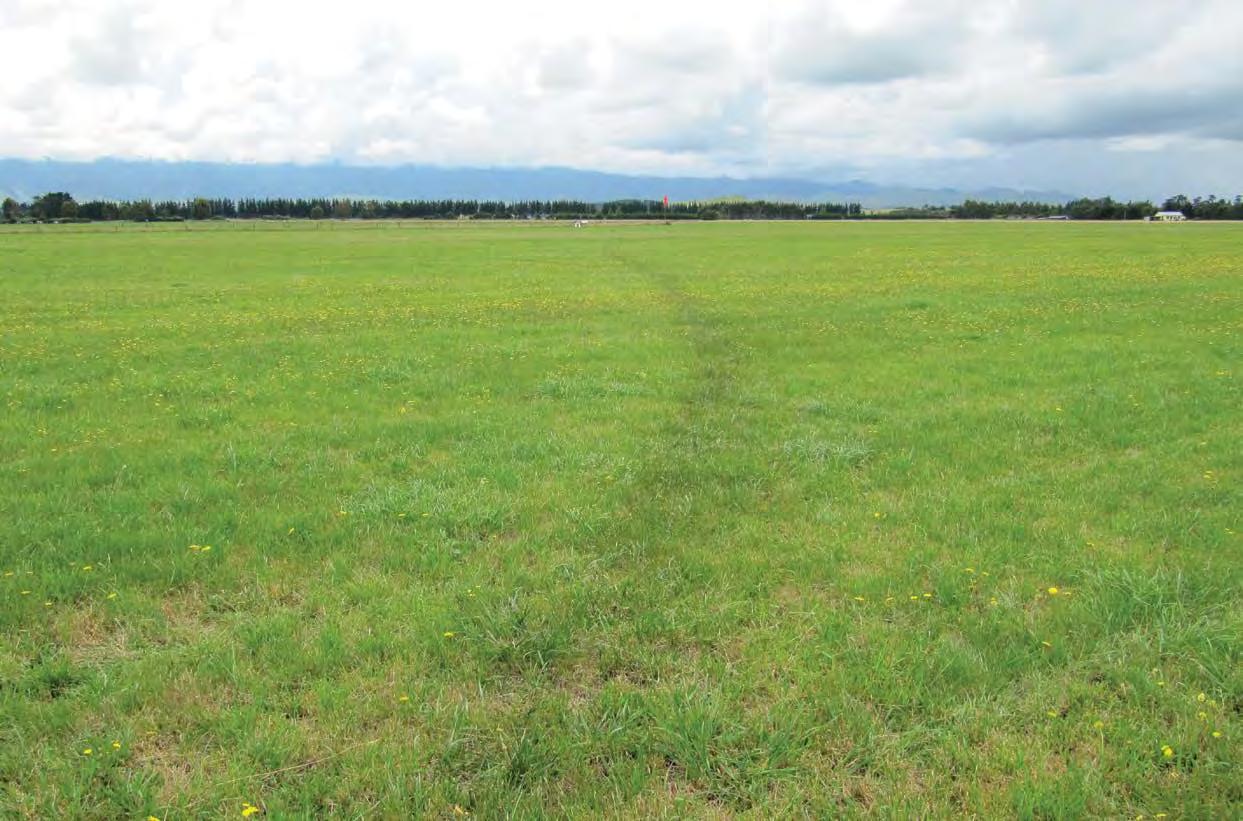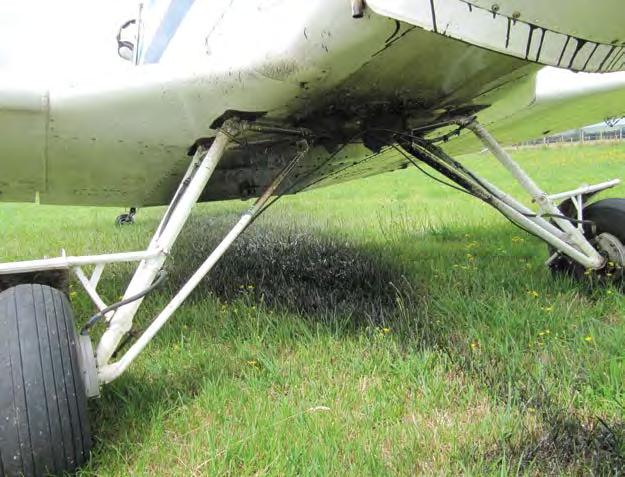
7 minute read
Towing
from SoaringNZ Issue 15
by mccawmedia
EVENTUALITIES – IT APPLIES TO THE TOW PILOT AS WELL AS THE GLIDER PILOT
Remember the E at the end of the pre-take off checklist? Do you seriously think about all the possible scenarios you might be faced with during and shortly after take-off? I like to use the check as an opportunity to lift my head out of the cockpit and focus on the big wide world outside and consider what could go wrong.
Advertisement
Recently I was lucky enough to be asked to instruct at the NZ Cadet Forces Gliding Course held at Dannevirke in late January. We had a nice long but quiet grass airfield, 19 keen cadets, a bunch of instructors, tow pilots and Cadet Force staff; add in some Army chefs and we were in business. I was sharing a very nice Grob 102 Twin II GNP with Roger Brown from Piako and on about day two the press came to visit and I got to take a local photographer lady for a flight to get some aerial shots of the town.
The take off behind a Pawnee was normal and we cleared the sewage ponds (thank goodness) and headed north towards the town. I was chatting to the passenger and noted all looked normal but I became aware that climb rate was low and the airspeed was getting down towards 60 knots. My ageing brain was just starting to think that something might be wrong when the tow plane wings rocked violently and an apologetic voice on the radio announced he had an engine problem and was returning to land downwind on the runway in use. After release I found myself at 700 feet on the edge of town so the photographer took some quick piccies and we turned back to join downwind at 400 feet for a low circuit to a normal landing. Not such a big issue for us in the glider.
The tow plane meanwhile completed his landing and taxied to the edge of the field leaving a huge trail of black oil on the grass. It turned out the pilot had experienced a loss of power and some vibration that he initially suspected was a carb icing problem. He tried the usual fix of applying carb heat but when the problem got worse he decided to wave me off and return to land. The problem was a completely fractured cylinder barrel such that you could see the piston, but what was interesting was the gradual loss of power rather than sudden failure you might expect. From the glider there was no visible indication that a fault was developing – no smoke or oil yet by the time the tow plane was back on the ground there was oil pouring everywhere.
In this case it was the tow pilot who needed to have thought about his EVENTUALITIES and what options he had if things went pear shaped soon after take off when there is not much time to react. He did a good job to get safely back on the airfield with no additional damage to the engine or aircraft and it was in fact back


in the air two days later. But he was lucky the problem occurred when it did – maybe 30 seconds later and he would have been faced with a forced landing in a paddock.
Twice last year while towing I experienced problems with the tow plane engine. One was a loss of power and increased vibration in the climb at about 1800 feet that caused me to wave off the glider and return to land, the other was rough running at part throttle while normal at full power. The point is that we work our tow plane engines very hard and tow pilots must be alert for any sign that something is not normal. Most piston engines will give warning that something is going bad. Temperatures, pressures, vibration levels, noise and rpm will give clues if we are smart enough and alert enough to interpret the message and take the necessary action.
How often do we climb out on the runway heading rather than turn back to remain close to the airfield for the first 500 feet? How often do we press on with the launch even though we know something is not quite right but there is a queue of gliders waiting to launch and we are the only tow plane available? How often do we run the fuel level down below the prudent minimum because we know we are remaining close to the airfield?
CLIO’S ANSWERS: 1. False. Wills was a world class glider pilot and became the 1952
Open Class World Champion during the competition in Spain. 2. The Hjordis had a circular fuselage and Wills could not get his shoulders into the cockpit. Therefore, holes were cut into the sides of the cockpit so that Wills' shoulders would fit. What this meant was, that while Wills himself could fly securely, if uncomfortably, ensconced into the glider, his shoulders were out in the breeze. 3. A. While Wills was very impressed by the glider during his flight testing of the Hjordis 2 (then renamed the Slingsby King Kite), it refused to recover from a test spin. Although he attempted to bail out, the centrifugal forces kept Wills in the cockpit but during his attempts to bail out, he shifted his weight enough that the glider recovered and he managed to land safely. Winch launching one King Kite in the Worlds caused it to spin in, with no injury to the pilot. Years later Fred Slingsby himself discovered something that he could not believe, that the wings had been built with wash-in instead of wash-out, which encourages tip stalling. 4. Wills was responsible for making the British Gliding Association (BGA) represent the mass of British glider pilots instead of just being another club. He also fought to make it the independent governing and controlling body for gliding and soaring in Britain, uncontrolled by government interference (well, not much anyway). In addition, he used his connections to minimize the controlled airspace in Britain. 5. False. That was fellow British pilot Donald Greig, who died during the 1948 Worlds. Wills had flown through the same valley and scratched at the same lift, at Era, where Grieg contacted the cable, but Wills himself never saw the cable. Wills lived nearly another 30 years. 6. Taking off from Dunstable and leaving the English coast at Kent, at an altitude of 600 feet, Wills flew across the English Channel to a France that he could not see due to the mist. The theory he was working on was that in September, the land cools more rapidly than the sea and thus there was the possibility of finding lift over the water. He was right! At one point, the sea lift carried him to 3500 feet MSL and when he crossed the French coast, he still had 3000 feet below him. 7. D. Again taking off from Dunstable, he reached the altitude of 14,170 feet over Welwyn, Hertfordshire, inside a cloud that he had unwilling entered – while unknowingly suffering from a hypoxia induced headache. Fortunately, the Minimoa was equipped with an artificial horizon, which he had never used before, and he left the cloud fairly quickly. 8. False. During the 1952 Spanish World Championship, Wills climbed in either a wave or a storm front (he thought the latter but it was smooth lift), to an altitude of just over 25,000 feet (according to his altimeter) for his Altitude Diamond. He became concerned though because he could not seem to exit the lift. Although on oxygen, he worried that he might be carried possibly as high as 40,000 feet before he could leave the lift band. More critically, he had to remove his mask in order to call his crew on the radio, and he did not know how long he had before he would lose his senses. Unfortunately, his barograph went off the chart at 22,430 feet and robbed him of the British Absolute Altitude record. 9. Up to the 18th of March, British gliding was pretty much tied to the ridges. Although the Germans, and even the Americans were doing it routinely, no Englishman had dared to go cross-country. On this day, Wills, Eric Collins, and Siebert Humphries took off into the unknown from Dunstable. Humphries landed 19 miles away. Collins (who Wills says was only one of two natural pilots he ever met) set a 2-place record by landing the London Gliding Club's Kassel 45 miles away in Little Waltham. Wills himself flew the club's Professor and landed 55 miles away in a field of blackberry bushes, near
Latchingdon. 10. D. OK, if you didn't get this one, there is no hope for you and you get a minus 10 points. Chill Wills was an American movie actor not a glider pilot. Chris and Justin are Philip's sons. Gavin is a cousin. The late Lucy was Gavin's daughter and the subject of a spectacular gliding film in New Zealand.
SOURCES Horsley, Terence. Soaring Flight, Current Books, New York, 1946. Simons, Martin. Sailplanes, 1920 to 1945, EQIP Werbung & Verlag, Kšnigswinter, Germany, 2001. Stephenson, Bruce. Unpublished email, 15 September 2009. Welch, Ann and Welch, Lorne. The Story of Gliding, John Murray, London, 1965. Wills, Philip. On Being a Bird, Max Parris & Co., London, 1953. Clio’s Wings #40, p. 4










